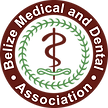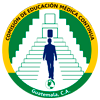Kerion celsi caused by Trichophyton tonsurans. Case report
DOI:
https://doi.org/10.61997/bjm.v14i2.469Keywords:
Dermatophytes, Scalp ringworm, TrichophytonAbstract
Introduction: Trichophyton tonsurans is showing a high prevalence among the species of anthropophilic dermatophytes that cause scalp ringworm; the pediatric population being the most vulnerable to disease. Clinical case: 10-year-old male patient with a personal history of present a single, large, inflammatory, alopecic lesion on the scalp. He was sent to the dermatology consult with a presumptive diagnosis of scalp ringworm and was then instructed to have a mycological scraping of the lesion performed in the Microbiology laboratory of the “Mariana Grajales” Provincial University Gynecological-Obstetric Hospital in Villa Clara, Cuba. Based on conventional studies such as culture, urease test and colonial micromorphology, Trichophyton tonsurans was reported as the etiologic agent. The micriobiological diagnosis was confirmed at the “Pedro Kourí” Institute. The patient was hospitalized to undergo medical treatment. He was discharged due to his favorable evolution and a definitive diagnosis of Kerion celsi. Conclusions: Scalp ringworm remains a clinical form typical of childhood. Trichophyton tonsurans has been shown to be an agent with a high incidence and prevalence in recent years. Microbiological diagnosis is a fundamental pillar of support in dermatology consultations.
Downloads
References
Müller VL, Kappa-Markovi K, Hyun J, Georgas D, Silberfarb G, Paasch U, et al. Tinea capitis et barbae caused by Trichophyton tonsurans: A retrospective cohort study of an infection chain after shavings in barber shops. Mycoses. 2021; 64:428-36. doi: 10.1111/myc.13231 DOI: https://doi.org/10.1111/myc.13231
Bonifaz Trujillo JA. Micología Médica Básica. 4ta ed. México D.F: McGraw Hill; 2012. Disponible en: https://booksmedicos.org/micologia-medica-basica-alexandro-bonifaz/
Franco-Fobe LE, Monforte ML, Fuentelsaz del Barrio MV, Cebollada R, López-Gómez C, Aspiroz C. La importancia de un diagnóstico precoz. Tinea capitis producida por Trichophyton tonsurans en un adolescente. Rev Esp Quimioter. 2024; 37(6): 509-11. doi: 10.37201/req/007.2024 DOI: https://doi.org/10.37201/req/007.2024
Messina F, Walker L, Romero MM, Arechavala AI, Negroni R, Depardo R, et al. Tinea capitis: aspectos clínicos y alternativas terapéuticas. Rev Arg Microbiol. 2021; 53:309-13. doi: 10.1016/j.ram.2021.01.004 DOI: https://doi.org/10.1016/j.ram.2021.01.004
Bolognia JL, Schaffer JV, Cerroni L. Dermatología. 4th ed. Philadelphia: Elsevier; 2018.
Bascón L, Galvañ JI, López-Riquelme I, Navarro-Guillamón PJ, Morón JM, Llamas JA et al. Brote de dermatofitosis en región de cabeza y cuello asociadas al rasurado en peluquerías: estudio descriptivo multicéntrico de una serie de casos. Actas Dermosifiliogr. 2023; 114:371-6. doi: 10.1016/j.ad.2023.02.001 DOI: https://doi.org/10.1016/j.ad.2023.02.001
Hill RC, Gold JAW, Lipner SR. Comprehensive Review of Tinea Capitis in Adults: Epidemiology, Risk Factors, Clinical Presentations, and Management. J. Fungi. 2024; 10: 357. doi: 10.3390/jof10050357 DOI: https://doi.org/10.3390/jof10050357
Fernández Andreu CM, Martínez Machín G, Perurena Lancha MR, Illnait Zaragozí MT, Velar Martínez R, San Juan Galán JL. Aportes del Laboratorio de Micología del Instituto de Medicina Tropical "Pedro Kourí" al desarrollo de la especialidad en Cuba. Rev Cuba Med Tropical. 2017; 69(3). Disponible en: https://revmedtropical.sld.cu/index.php/medtropical/article/view/292
Suárez HM, Estrada OA, Peláez MR, Pérez JY, Pérez AJ, Morell MP, et al. Dermatofitosis en la provincia de Ciego de Ávila (Cuba). Boletín Micológico. 1994; 9(1-2):121-3. Disponible en: https://rcl.uv.cl/index.php/Bolmicol/article/view/1113 DOI: https://doi.org/10.22370/bolmicol.1994.9.0.1113
Russo MF, Almassio A, Abad ME, Larralde M. Tinea capitis por Trichophyton tonsurans: una enfermedad emergente en Argentina. Arch Argent Pediatr. 2024; 122(6):e202310254. doi: 10.5546/aap.2023-10254 DOI: https://doi.org/10.5546/aap.2023-10254
Pilz JF, Köberle M, Kain A, Seidl P, Zink A, Biedermann T, et al. Increasing incidence of Trichophyton tonsurans in Munich - A single-centre observation. Mycoses. 2023; 66(5):441-7. doi: 10.1111/myc.13563 DOI: https://doi.org/10.1111/myc.13563
Iglesias Hernández TM, Velar Martínez RE, Divin Kenguruka D, Illnait Zaragozí MT. Estudio clínico-epidemiológico y microbiológico de las dermatofitosis en el adulto. Belize J Med. 2024; 13(3). doi: 10.61997/bjm.v13i3.445 DOI: https://doi.org/10.61997/bjm.v13i3.445
Vargas-Navia N, Ayala Monroy GA, Franco Rúab C, Malagón Caicedo JP, Rojas Hernández JP. Tiña Capitis en niños. Rev Chil Pediatr. 2020; 91(5):773-83. Disponible en: http://www.scielo.cl/scielo.php?script=sci_arttext&pid=S0370-41062020000500773&Ing=es DOI: https://doi.org/10.32641/rchped.v91i5.1345
Hennessee IP, Benedict K, Dulski TM, Lipner SR, Gold JAW. Racial disparities, risk factors, and clinical management practices for tinea capitis: An observational cohort study among US children with Medicaid. J Am Acad Dermatol. 2023; 89(6):1261-4. doi: 10.1016/j.jaad.2023.07.1025 DOI: https://doi.org/10.1016/j.jaad.2023.07.1025
Powell J, Porter E, Field S, O’Connell NH, Carty K, Dunne CP. Epidemiology of dermatomycoses and onychomycoses in Ireland (2001–2020): A single-institution review. Mycoses. 2022; 65:770-9. doi: 10.1111/myc.13473 DOI: https://doi.org/10.1111/myc.13473
Downloads
Published
How to Cite
Issue
Section
License
Copyright (c) 2025 Dianiley García Gómez, Rosario Esperanz Velar Martínez, Licelia María Montesino Reyes

This work is licensed under a Creative Commons Attribution-NonCommercial 4.0 International License.
BJM protects Copyright at all times. However, it gives up part of the rights by displaying a Creative Commons License 4.0 (cc-by-nc), which allows the use of the work to share (copy and redistribute the material in any support or format) and adapt (transform and built from the material) as long as exclusive mention of the publication in the journal as the primary source is made. Under no circumstances, the work can be commercialized.













